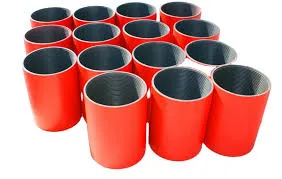- Afrikaans
- Albanian
- Amharic
- Arabic
- Armenian
- Azerbaijani
- Basque
- Belarusian
- Bengali
- Bosnian
- Bulgarian
- Catalan
- Cebuano
- Corsican
- Croatian
- Czech
- Danish
- Dutch
- English
- Esperanto
- Estonian
- Finnish
- French
- Frisian
- Galician
- Georgian
- German
- Greek
- Gujarati
- Haitian Creole
- hausa
- hawaiian
- Hebrew
- Hindi
- Miao
- Hungarian
- Icelandic
- igbo
- Indonesian
- irish
- Italian
- Japanese
- Javanese
- Kannada
- kazakh
- Khmer
- Rwandese
- Korean
- Kurdish
- Kyrgyz
- Lao
- Latin
- Latvian
- Lithuanian
- Luxembourgish
- Macedonian
- Malgashi
- Malay
- Malayalam
- Maltese
- Maori
- Marathi
- Mongolian
- Myanmar
- Nepali
- Norwegian
- Norwegian
- Occitan
- Pashto
- Persian
- Polish
- Portuguese
- Punjabi
- Romanian
- Russian
- Samoan
- Scottish Gaelic
- Serbian
- Sesotho
- Shona
- Sindhi
- Sinhala
- Slovak
- Slovenian
- Somali
- Spanish
- Sundanese
- Swahili
- Swedish
- Tagalog
- Tajik
- Tamil
- Tatar
- Telugu
- Thai
- Turkish
- Turkmen
- Ukrainian
- Urdu
- Uighur
- Uzbek
- Vietnamese
- Welsh
- Bantu
- Yiddish
- Yoruba
- Zulu
casing and tubing connections
Understanding Casing and Tubing Connections in Oil and Gas Operations
In the oil and gas industry, casing and tubing connections are critical components in ensuring the structural integrity and operational efficiency of drilling operations
. These connections play a vital role in maintaining wellbore stability, preventing fluid leaks, and facilitating the extraction of hydrocarbons from underground reservoirs.Casing, typically constructed from steel, is used to line the wellbore, preventing collapse and protecting groundwater from contamination. The process begins with drilling a well to a predetermined depth, after which casing is inserted and cemented in place. The cement seals the annular space between the casing and the geological formations, providing both support and isolation.
Casing connections are essential as they join individual casing sections together. The most common types of casing connections include threaded and coupled designs, welded designs, and, more recently, premium connections. Each type has its advantages depending on the specific requirements of the well, such as pressure, temperature, and the type of fluids involved. Premium connections, for example, are designed for high-pressure applications and offer superior performance compared to standard threaded designs.
casing and tubing connections

On the other hand, tubing is installed inside the casing and is used to transport hydrocarbons from the reservoir to the surface. Tubing connections must withstand the pressures associated with production while also facilitating the easy flow of oil and gas. Similar to casing, tubing connections can be threaded or use mechanically interlocked designs. The choice of connection type can significantly impact the efficiency of production and the longevity of the well.
Both casing and tubing connections must be meticulously designed and tested to ensure they meet industry standards and environmental regulations. Poorly crafted connections can lead to catastrophic failures, such as blowouts or leaks, which pose both safety risks and environmental hazards.
In conclusion, the significance of casing and tubing connections in drilling and production operations cannot be overstated. These connections not only ensure the stability and safety of the well but also enhance the efficiency of hydrocarbon extraction. As technology advances, the development of new materials and connection designs continues to evolve, promising even greater reliability and performance in the oil and gas industry. Understanding these components is crucial for professionals working to optimize drilling operations and achieve sustainable resource management.
-
Tubing Pup Joints: Essential Components for Oil and Gas OperationsNewsJul.10,2025
-
Pup Joints: Essential Components for Reliable Drilling OperationsNewsJul.10,2025
-
Pipe Couplings: Connecting Your World EfficientlyNewsJul.10,2025
-
Mastering Oilfield Operations with Quality Tubing and CasingNewsJul.10,2025
-
High-Quality Casing Couplings for Every NeedNewsJul.10,2025
-
Boost Your Drilling Efficiency with Premium Crossover Tools & Seating NipplesNewsJul.10,2025







